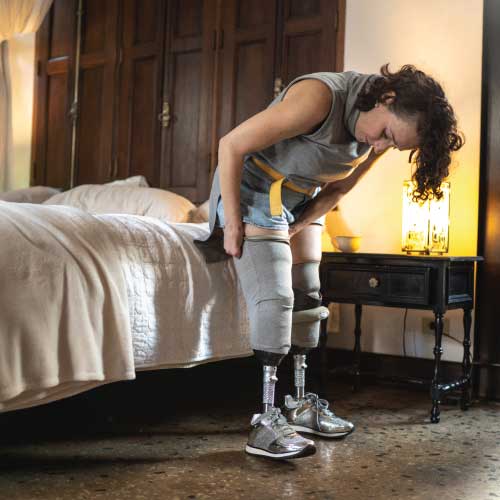People With Upper Limb Loss Can Feel Warmth on Their Missing Hands
Researchers in Europe conducted a study that found that individuals with upper-limb loss can still feel warmth through their absent hands. This discovery presents a new direction for research that could improve the quality of life of millions worldwide.

A team of researchers, led by Solaiman Shokur from the Swiss Federal Institute of Technology in Lausanne, studied 26 individuals who lost a part of one arm. These individuals reported feeling the presence of their missing hand, also known as a "phantom hand." The researchers placed a temperature-changing device on the residual arms of the study participants. They then changed the temperature of the device from 25°C (77°F) to 32°C (89.6°F) to 37°C (98.6°F) and asked the participants if they could feel the temperature shift and distinguish between the different temperature levels.
Among the 26 participants, 17 felt warmth from the device, which the researchers called a "phantom thermal sensation." Of those 17, 15 could distinguish between the three different temperatures. According to the researchers, this could be because the nerves continue to grow in the skin even after amputation, and by precisely targeting through nerves with heat, the participants could feel this phantom sensation.
As for the remaining participants who didn't feel the warmth from the device, Shokur said that most had fire-related accidents that burned their skin. This could have led to the loss of sensitivity in their skin.
As part of the experiment, researchers placed a sensor on copper, glass, and plastic materials. The sensor was connected to the residual arms of nine blindfolded participants. All of them were chosen because they could already feel phantom thermal sensations.
To start, the researchers set the sensor's temperature at 32°C, which is the approximate temperature of the skin. Then, they cooled the sensor, making it the exact temperature of the skin whenever it touched copper, glass, or plastic.
The researchers found that the participants were able to correctly identify which material the sensor was touching with 66% accuracy. Meanwhile, the participants achieved 67% accuracy when they felt the materials with their intact biological hand.
The researchers are improving their sensor technology to make it usable on the fingertips of prosthetic arms. It could allow people with upper-limb loss to feel various temperatures again—a life-saving development as it could prevent burns. It could also improve the quality of life of prosthetic arm users as touching through their prostheses would feel more natural.
Most importantly, this discovery challenges the belief that amputees can only feel sensations in their residual limbs. This could lead to more life-changing research in the future.











































































